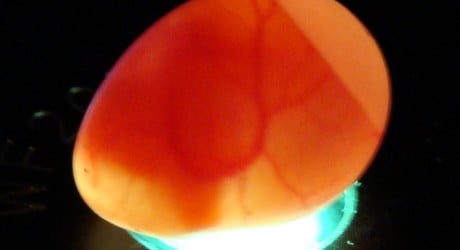- Jun 6, 2013
- 497
- 127
- 181
I'm on day 7. This is my first incubation. I candled and all have a clear air pocket, a cloudy dark area, and a dark spot. These look just like the Learning Center candling pics. However, I'm using an LG still air incubator and the eggs are just on the wire grate, so the air sacks are length-wise (albeit at an angle) on the eggs. I haven't found candling photos of eggs in this position to compare to. Questions:
1. Is there ANY benefit/downside to incubating sideways
2. Should I (or is it too late to) place the eggs in a cardboard carton from here on out
3. If in a cardboard carton, do you completely flip each egg for turning (round to pointy end, etc), or do you use a prop to raise one end of the carton, then prop the opposite end for 'turning'?
Thanks!
1. Is there ANY benefit/downside to incubating sideways
2. Should I (or is it too late to) place the eggs in a cardboard carton from here on out
3. If in a cardboard carton, do you completely flip each egg for turning (round to pointy end, etc), or do you use a prop to raise one end of the carton, then prop the opposite end for 'turning'?
Thanks!





